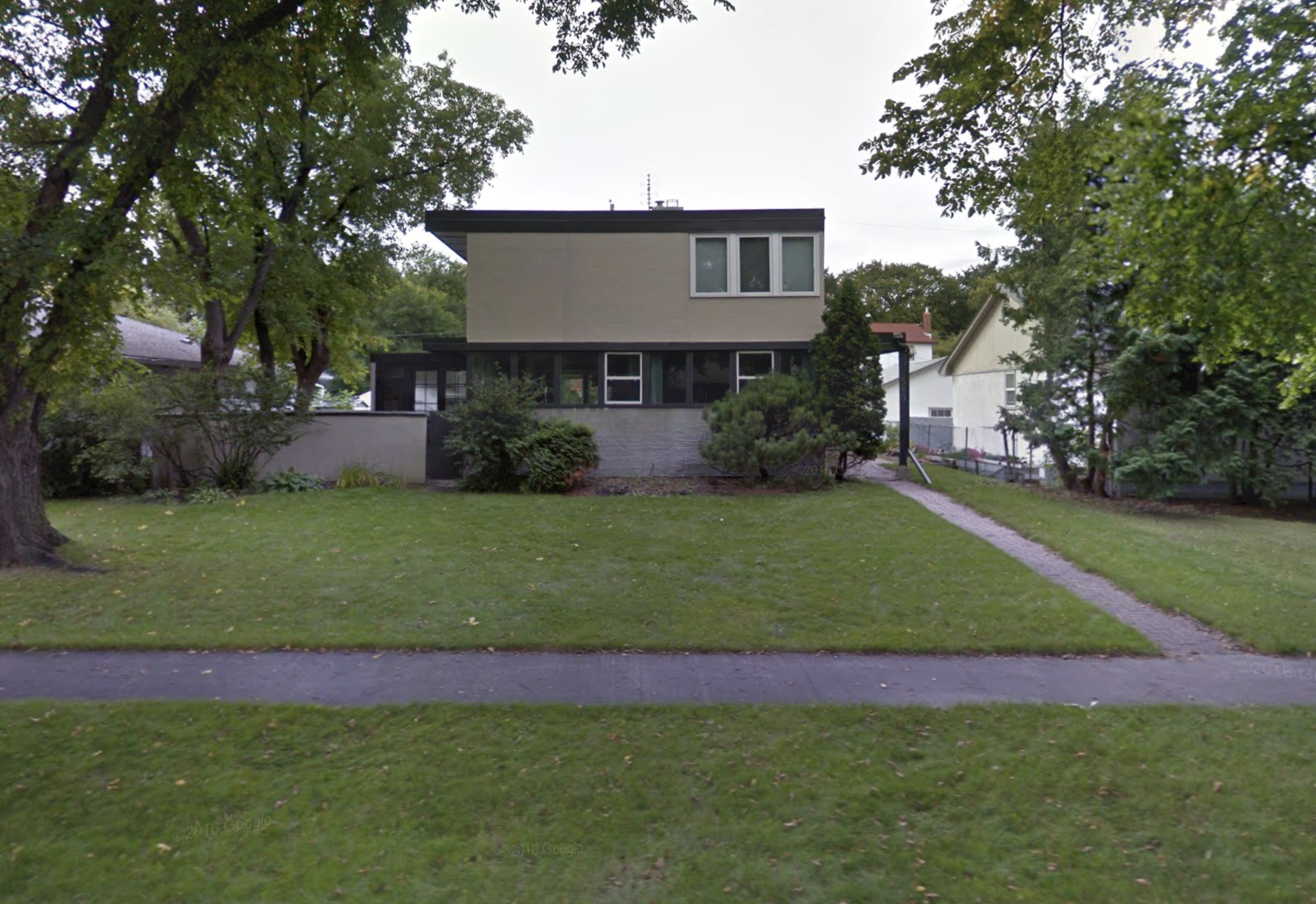Buildings
589 Niagara Street
| Address: | 589 Niagara Street |
|---|---|
| Original Use: | Dwelling |
| Constructed: | 1953 |
| Architects: | James Donahue, Wolfgang Gerson |
| Contractors: | Henry Construction Company |
More Information
Designed by architects James Donahue and Wolfgang Gerson, the house was built for Philip and Lee Schachter. After obtaining a commerce degree in 1943 he volunteered for the Canadian army, and was sent overseas in January 1945, eight months before the end of WWII. After the war he took over the family business. In 1947, Philip married Lee Nitikman and they had four children (Harry, Seema, Miral and Saul). In time, he opened a clothing store and started a mail-order business selling western wear across Canada. In 1965, he went back to school to become a lawyer. He loved his second career as a lawyer and highly-regarded Crown prosecutor in Manitoba.
Lee graduated in arts from the University of Manitoba in 1945 and went on to study journalism at Northwestern University in Chicago. In addition to her role as a wife and mother of four, she pursued a career as a writer, editor, playwright and critic,
River Heights is a neighbourhood in Winnipeg’s southwest quadrant with a population of approximately 56,000. It is located south of the Assiniboine River, west of Cambridge Street, east of Edgeland Street and north of the Canadian National Railways mainline. Historically the area was one constituent in the larger Parish of St. Boniface, though by 1882 it had been annexed by the City of Winnipeg. A key role in the neighourhood’s development was the firm of Howey and Borebank, who instigated the sector’s subdivision in the first decade of the twentieth century. The firm advertised the area thusly: “The property being high, well wooded and yet within twenty minutes of the business centre makes it a most desirable residential section.” This early growth was facilitated by the establishment of Assiniboine Park in 1904 and construction and expansion during this period of the Academy Road streetcar line. Another element in selling the area was the creation of Wellington Crescent as a prestige home location, treated as a “magnificent drive leading out to the new suburban park” of a width near three times that of a regular road. Over the proceeding decades the area grew south and eastward, reaching a population of 70,650 in 1971; at times this growth was facilitated by the National Housing Act. The neighbourhood contains a number of examples of modern architecture, exemplified in schools, religious structures and businesses, as well as in homes, particularly concentrated in the post-war districts located south of Corydon Avenue. Largely comprised of north-south oriented residential suburban streets, the area is known for its canopy of elm trees which line many of its boulevards.
Design Characteristics
| Materials: | Stucco and wood with extensive glazing |
|---|---|
| Size: | Double storey 1,940 square feet |
| Suburb: | River Heights |
| Frontage Direction: | East |

